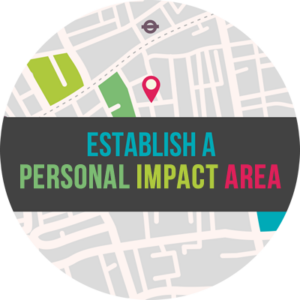In my June 2016 article I wrote about the usefulness of defining a Personal Impact Area (PIA), the geographical space where we spend most of our time and have the greatest opportunity to engage our neighbors. But as with all things discipleship, knowing the importance of something is one thing, doing it is quite another.
Because ministry and listening go hand in hand, we should think of our Personal Impact Area as our personal listening area – a little slice of our region for which we care deeply and are compelled to listen to the people there – our neighbors. So the value of our PIA is that it provides a listening strategy that is realistic and facilitates relationships with our neighbors. It is the place where we have the greatest opportunity for invitation and influence. So let’s look at how we can establish our own PIA.
Steps to Establish a Personal Impact Area
Get a Map – Obtain a map that covers your neighborhood and a small amount of the area on all its borders. Your church staff is currently identifying a resource for neighborhood maps that can be provided to each family at a very reasonable cost. Having a large physical map has several qualities that are useful for understanding your PIA:
- a large map can be viewed easily by several people at the same time allowing brainstorming to be a family project;

- you can display your map in a prominent place in your home, keeping your neighbors and the space you share with them always before you;
- a PIA map helps you strategize how to develop relationships with your neighbors around shared community experience.
Walk and Pray – Walk your neighborhood and pray that God would open your eyes to its realities, appreciating what is good, useful and right, and acknowledging what needs His redemption. The key question to always ask yourself is, “Where do I see God working?” By prayer walking your neighborhood, you will see more, hear more, smell more, and grasp more completely what God is doing there.
Define the Boundaries – Define the boundaries of your PIA. Physical and social barriers separate people and the formation of relationships based upon their shared community experience. These barriers are important signposts that help us determine the boundaries of our PIA. Add the following to your map:
- Physical Boundaries. These include rivers, lakes, parks, green areas, freeways, busy boulevards, etc.
- Boundaries of Class, Race, and Ethnicity. Sometimes it makes sense to ignore physical boundaries in order to maintain the continuity of social groups. If, for example, a freeway splits an immigrant population, consider traversing the freeway to include the entire group. The group may share leadership and family members living on both sides of the freeway. Never use boundaries of any kind to exclude groups of people from your PIA for convenience sake or prejudice.
- Listening Posts. Neighborhood gathering places like coffee shops, restaurants, pubs, and parks are often our best opportunity to have conversations with people based upon the community experience we share with them.
Make it Walkable – Look at your map and scale your PIA down to an area that can be easily walked. Avoid being a drive-by neighbor by committing to live life with the people God has placed in close proximity to us. From a car we can only wave. On a walk we can listen and embrace.
Connect the Dots – Plot on the map all the people you have relationships with in your PIA. After you identify where they live in the neighborhood, teach them to take responsibility for the blocks surrounding their homes. That way you can divide your neighborhood among other missional believers and increase the relationship potential of your ministry.
As you walk, pray, and learn more about your PIA, routinely record your observations and insights on your map. The more you learn about your neighborhood, the better you can define it and increase the effectiveness of your listening. An updated map will reveal and clarify the unique relationships between places and people, people and people, and statistics and people. More on these relationships next time.
